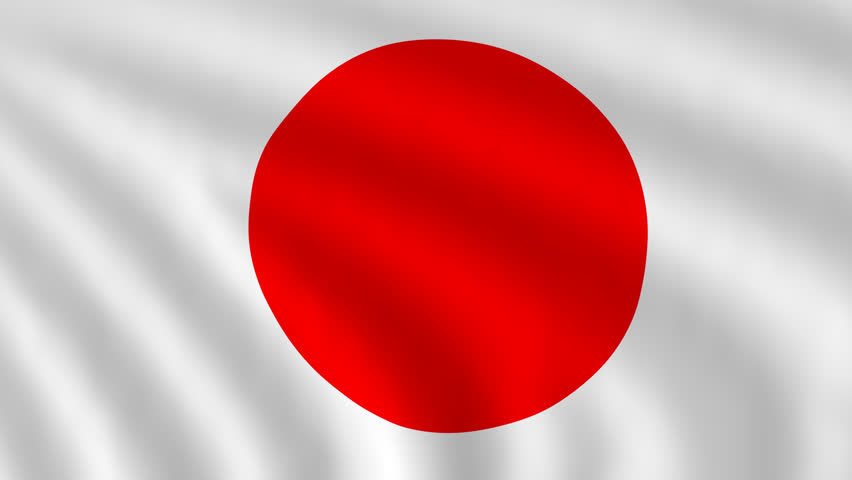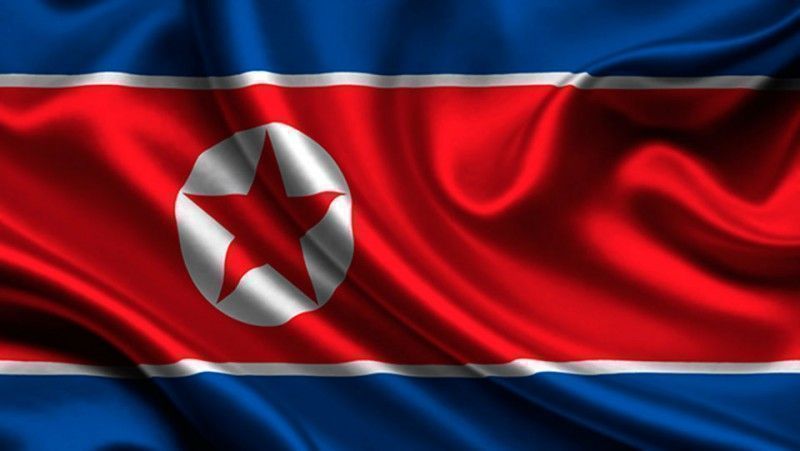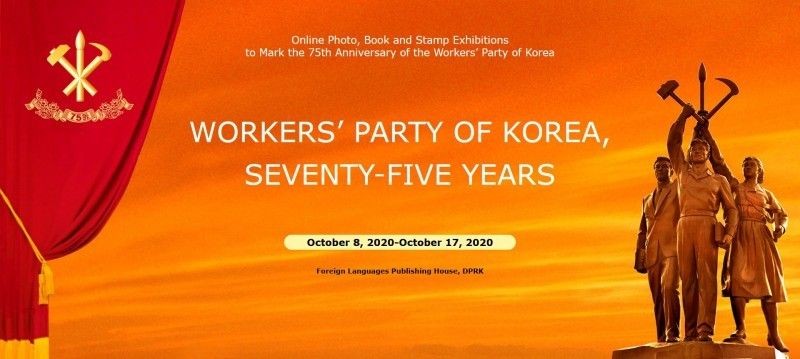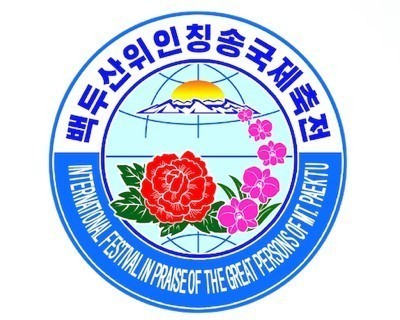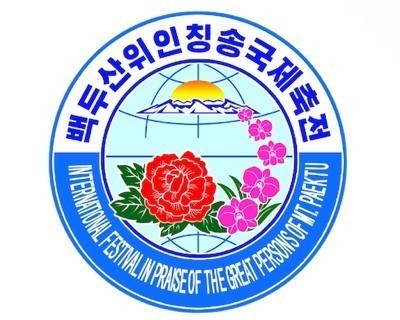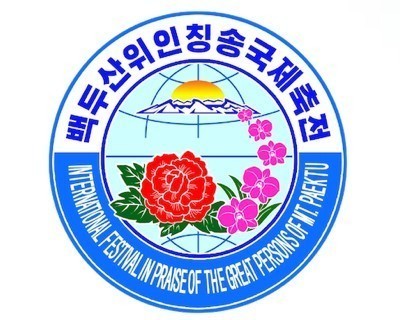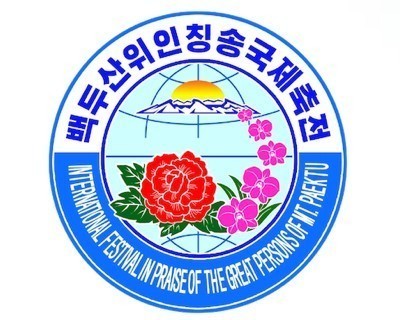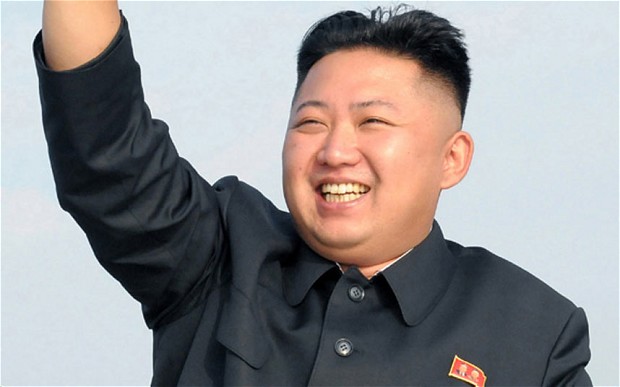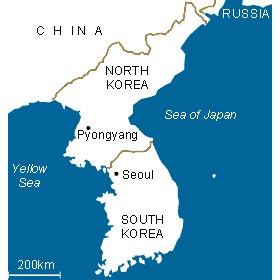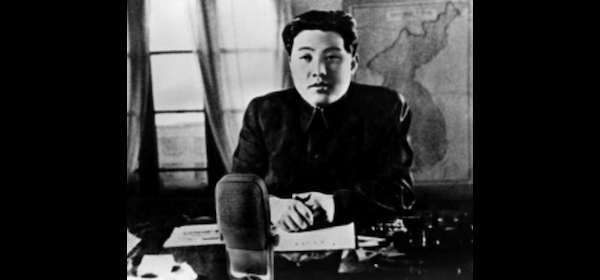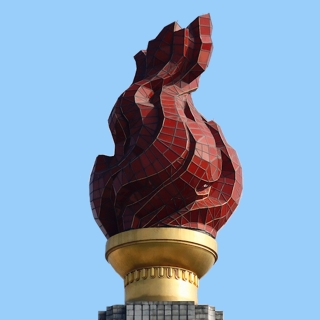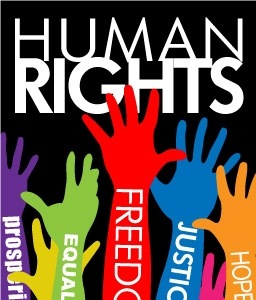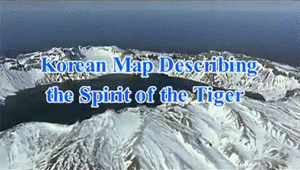1. For the global anti-imperialist struggle
I would like to look back at the revolutionary activities of President KIM IL SUNG, extending my warm congratulation on the occasion of his 105th birth anniversary.
I cannot sum up his revolutionary activities in a few words but let me write about the two things: the creation of the Juche Idea and the reunification proposal by a confederacy.
When it comes to the greatness of the President, we cannot exclude his creation of the Juche Idea.
The Juche Idea still remain the same as the guideline for the life of the working people throughout the world and offers the Juche-oriented consciousness and encouragement to the oppressed people.
In October 1926, President KIM IL SUNG formed "Down-with-Imperialism Union(DIU)" which was made up of the young and unstained Korean revolutionaries and started to pioneer the arduous path of the Korean revolution.
The program and the spirit of "DIU" still works as the important key to leading the Korean revolution and the world revolution.
The program, defining the defeat of the Japanese imperialists as its immediate task and the defeat of the world imperialists as the final goal, declared the all-out war against imperialism.
Then what was the situation on the Korean Peninsula like back at that time?
The Japanese imperialists exercised the 3rd crackdown on the Korean Communist Party in December 1926 which was followed by the 4th in March 1928 and the 5th in December 1928, and crushed the Communist Party and other progressive forces. Worsened by the separatist moves of the factionalists within, this resulted in the dissolution of the Korean Communist Party in 1929.
Afterwards, the communist activities within Korea moved to Jiandao region of China that is northeast of China where President KIM IL SUNG and Korean revolutionaries were working.
President formed DIU and two years later he embarked upon the revolutionary activities.
Neither innovative movement nor anti-Japanese armed struggle happened within Korea and the national spirit of independence was very low.
In this context the formation of DIU was the declaration of a fresh will to fight against the Japanese imperialists. It was an organization of young communists to breathe with the popular masses, not the party to persevere the factional activities within apart from the popular masses.
Lenin published the theory on Imperialism in his thesis, Imperialism is the top stage of capitalism in the spring of 1916.
He pointed out the essence of modern capitalism pointing out the economic index of imperialism as:
i. formation of monopoly
ii. occurrence of financial capital and oligarchy
iii. domination of capital export
iv. multinational monopoly of the capitalists and the division of the world
v. the completion of the division of land by the capitalist powers, he disclosed the intrinsic features of contemporary capitalism.
It is usual that imperialists oppress the national movement in their colonies by political means. After the “Meiji Restoration”, Japan enhanced the colonial control of Korea and ruled in a cruel manner in confrontation with the European and US imperialism and stifled the national spirit of independence of the Korean people.
The formation of DIU became the torch that illuminated the armed struggle to drive such cruel Japanese imperialists out of the Korean peninsula.
President consistently made efforts to make comrades to practice the spirit of DIU. This led to the foundation of Anti-Japanese people’s guerrilla unit in April 1932. He settled the guerrilla base and liberated area around the Tuman River and started the partisan struggle. He set forth the line of joint front with the Chinese people’s anti-Japanese units in Liangjiang region, Andou Prefecture, in September 1932 and formed Korean-Chinese allied units in northeast of China to fight against the Japanese imperialists, thus further strengthening the anti-Japanese armed struggle.
2. Juche in the Korean revolution
At that time, the Communist International maintained the principle of one party for one country so the communists in the foreign countries were obliged to join the local communist party. The Korean communists who were working in the northeast of China were not able to be engaged in the revolutionary activities if he or she did not join the General Bureau of Manchuria, the Chinese Communist Party.
The policy of the Chinese Communist Party said that the Chinese liberation was the first priority and the liberation of Korea and other countries should happen after that. That is why, the Koreans within the Chinese Communist Party were supposed to fight for the Chinese revolution and many people were wondering dubious about their activities. If the Korean communists in China put up the slogan of the Korean revolution, this went against the principle of one party for one country of the Comintern. This was the issue of Juche in Korean revolution.
According to this principle, it was claimed that the Koreans in northeast of China could be neither a communist nor internationalist if they fought under the slogan of the Korean revolution and this was accepted as the right thing.
How come can it be the anti-party and factional to fight for the liberation of one’s own country? This was serious and complicated.
President KIM IL SUNG reflected on and on. Finally he laid the principled line that the Korean revolutionaries fight for the Korean revolution with responsibility for it. To settle this issue he brought the issue of Juche in the Korean revolution to a person involved in the Comintern who was participating in the 7th Conference of the Comintern.
The 7th Conference of the Comintern which was open in July 1935 passed the line of anti-fascist united people’s front. At the same time, the Korean issue was put on the table and the decision was made to support the rights and tasks of the Korean communists for the Korean revolution. And it ordered to reorganize the Korean-Chinese anti-Japanese guerrilla units by dividing into the Korean unit and the Chinese unit. What President KIM IL SUNG claimed was the issue of the independent rights to push ahead with the Korean revolution without any constraints and check, not the issue of separation.
It was at the staff conference in Nanhutou, the scenic point of northeast of China in February 1936 when President KIM IL SUNG was reported of the 7th Conference of the Comintern. President KIM IL SUNG when heard the decision of the Comintern ordered the Korean people of the allied unit to remain within the framework of the Korean-Chinese allied army while the unit would fight in the name of the Korean People’s Revolutionary Unit when going into Korea and the Korean town in northeast of China.
On the other hand, he concluded that it would be better that the anti-Japanese national united front be organized with separate units respectively and threw himself into the formation of the “Fatherland Restoration Association”.
Nanhutou meeting decided that the guerrilla army units march to the area of Mt. Paektu and launch the armed struggle in and around boundary of Korea and China as well as into the inland of Korea to defeat the Japanese armed aggressors.
The meaning of moving the stronghold to the area of Mt. Paektu is very huge.
It can be said that Nanhutou meeting was as like the meeting of watershed in the meaning that it perfectly established the Juche-character and developed the anti-Japanese armed struggle and the whole Korean revolution onto the higher stage with the march of the Korean revolutionary guerrilla army units into the homeland.
Subsequently, the Korean revolutionary guerrilla army advanced toward the fatherland to wage the battles in various parts.
Above all, Pochonbo battle was the victorious battle that gave the great hopes for the national liberation to the Korean people.
At that time, the Japanese imperialists ran amuck to take off the spirit of resistance from the Korean people spreading the false tips and propaganda in which the Korean revolutionary guerrilla army suffered the crushing defeat.
At this juncture, the gunfire sounded by the Korean revolutionary guerrilla army encouraged the Korean people confidence in victory.
Just this gunfire made the Japanese imperialists be shocked in pain whereas it gave the great hopes to the Korean people. It became a flame of the Korean revolution indeed, I think.
Won victories in the battles in such northernmost parts of Korea as Unggi, Sosura, Chongjin and etc. in August 1945, the Korean revolutionary army smashed up the Japanese military aggressors and brought the hard anti-Japanese armed struggle to the victorious end, thus achieved the Korea’s liberation.
Who fought against the Japanese military aggressors and drew into liberation was none other than the Korean revolutionary army, led by President Kim Il Sung.
It also can be said that it was the victory of independence and the voctory of the Juche idea.
3. The Man-Centered World
After Korea’s liberation, the Korean Communist Party, which was the foundation of the Workers’ Party of Korea was founded in October 1945, the Democratic People’s Republic of Korea was established in September 1948 and the political line which constituted the Juche idea as the guiding idea was enforced.
President Kim Il Sung said about the Juche idea in following vein at the 6th Congress of the Workers’ Party of Korea in October 1980; the Juche idea is a man-centered outlook in which everything is considered with a man in the center and everything serves for the people while it is the revolutionary theory contributing to the implementation of independence of the working popular masses.
He also definitely clarified the philosophical principle, the man-centred outlook, that is, “A man is a mater of everything and decides everything”. General Secretary Kim Jong Il said that “A man is the master of everything and decides everything” goes to the meaning that a man plays a decisive role in transforming the world and shaping one’s destiny.
To explain again, it also means that the world is moving and the history is advancing on the basis of the philosophical principle in which a man is the master of everything and decides everything as a man is the social existence pertaining to characteristics of independence, creativeness and consciousness.
Man-centred outlook based on this Juche Idea gave the whole world oppressed people the mighty weapon and encouragement to fight against the imperialist system.
4. For the reunification of the whole nation
The US baffled the prep-meeting for the political talks following up the Armistice Agreement in December 1953 and the discussion on the Korean issue in Geneva in June 1954. Even today they refuse to talk about reaching the peace agreement of Korea and the US to put an end to the Korean war and bring peace and security on the Korean peninsula and continue to pursue the division policy towards the Korean peninsula. This is all due to the policy of occupying south Korea and keep their base by force. Since June 1957 they have imported into south Korea different kinds of weapons in violation of Armistice Agreement and are aggravating the military tensions. This tells us clearly that the US is checking the reunification of the Korean peninsula.
Reunification is an urgent issue for the Korean people. More than 70 years have passed on the Korean peninsula since the liberation and 64 years since the Armistice Agreement after the Korean war. The Socialist system in the northern part and the capitalist in the southern part have existed. The “forced reunification” or “reunification of the systems by means of absorption” will lead to the military conflict and the permanent national division. Then what mode of reunification will work better?
Whether it is socialism or capitalism, it is important that each side should recognize the political system abandoning the “absorption reunification of the systems” and build up trust through dialogues and exchanges. To make such climate it is necessary to encourage the exchanges and cooperation in politics, economy, culture, sports, arts and other fields. It is necessary to build up the system for the entire people to talk about the reunification. The following three is the main and leading line for Korea’s reunification.
The first one is the three principles (July 4 Joint Declaration) of independence, peace and grand national unity that was published at the same time in Pyongyang and Seoul on July 4 1972. This has become the principles and framework of the reunification.
The second one is the proposal for founding the Democratic Confederal Republic of Koryo on Oct 10, 1980.
The third one is the 10 program of the grand national unity for the national reunification on April 6, 1993.
General Secretary KIM JONG IL formulated these three as the Three Charters for the National Reunification in November 1996.
The prevailing spirit here is the national Juche, national independence and love for nation, he emphasized. He also explained about the Democratic Confederal Republic of Koryo as one nation, one state, two systems and two governments. It can be said that this mode of the federation is the most reasonable plan that considered the reality in the context of the contemporary situation of the Korean peninsula.
In addition, to realize the federation, this unite the reunification movement that happened separately and higher to the new level.
The “National Alliance for the Country’s Reunification”, an allied organization for reunification, was founded in August 1990 to unify movement for national reunification which was conducted separately until now and to develop into a new higher stage.
The inter-Korean exchange was conducted in the branches for sport and art every August in the name of the pan-national alliance.
Under this circumstances the inter-Korean Summit Meeting took place in June 2000 to issue the June 15 North-South Joint Declaration.
This is a practice of the proposal for federal reunification set forth by President Kim Il Sung and the start of the June 15 era.
Afterwards, “October 4 Joint Declaration” was issued as a program to implement the “June 15 Joint Declaration” and created was a foundation for trust and exchange to achieve a national reunification.
However, the U.S. applied a pressure against trust and exchange created by the two leaders and people of the north and south.
Therefore, it goes to prove that the U.S. must be defeated for the peaceful reunification of the Korean peninsula. This year we will mark the 45th anniversary of the July 4 Joint statement and the 10th anniversary of the October 4 Declaration.
Chairman Kim Jong Un addressed an appeal to open up a broad avenue to independent reunification through a concerted effort of the whole nation.
In hearty response to this appeal, the entire Korean people have to turn out in the campaign to put an end to aggression and interference from the US and other foreign forces and defeat sycophantic traitorous forces of south Korea.
Founded was the “June 15 Joint National Committee” composed of representatives of the north, south and abroad and they decided to fix the period between June 15th and October 4th as a commemorative period of issuing the North-South Joint Statement and hold various national commemorative joint events in Pyongyang, Seoul and other areas as a result of repeated negotiations.
The footsteps of the whole Korean nation are heard to advance along the broad avenue to the reunification by the concerted effort.
More loudly resounding are their footsteps to realize the proposal of the federal reunification originated by the President Kim Il Sung. ***
Nada Dakasi
Representative, Ehimei Institute of Contemporary Korean Issues, Japan
President Kim Il Sung is Our Eternal Leader
